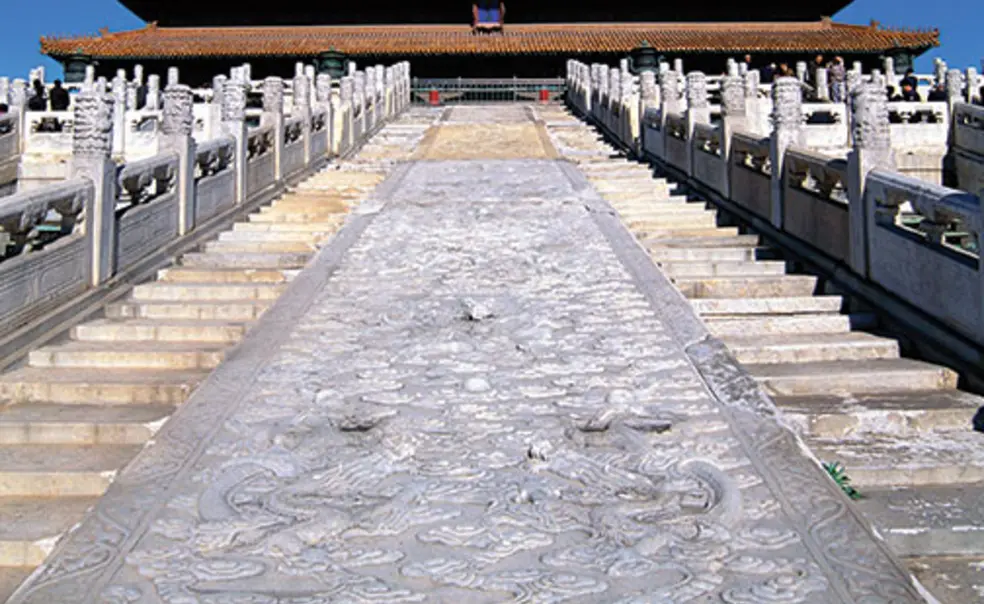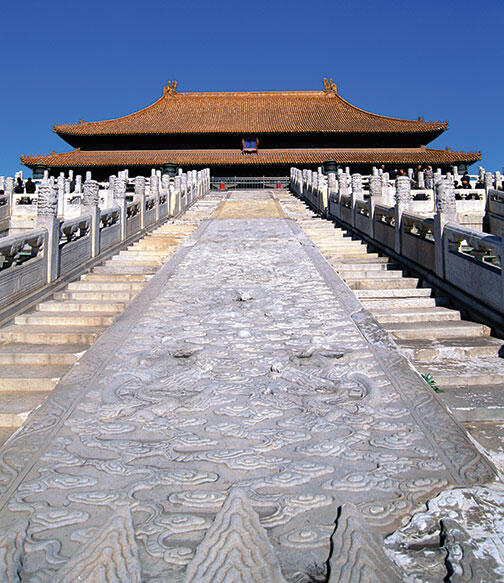Engineering: How Did They Do That?
Professors uncover how an immense slab of stone was transported in ancient China
On a visit to Beijing’s Forbidden City two years ago, Professor Howard A. Stone was amazed when he saw the 300-ton carved marble slab that sits in front of the palace, forming part of a staircase. A professor of mechanical and aerospace engineering, Stone asked himself, “How on earth did it get there?”
Guidebooks claimed that a huge squad of men dragged the stone from the quarry to the palace site — a distance of 43 miles — in deep winter. Stone and his Chinese colleagues, who specialize in friction, were puzzled about how the stone was moved. At first, they considered the possibility that the Large Stone Carving, which was installed in about A.D. 1400 during the palace’s construction, was pulled on wheeled carts, used in China since 1500 B.C. Using historical documents to further their understanding of ancient hauling techniques, the team discovered that no cart would have been strong enough to carry the stone, which weighs as much as 30 school buses.
Rolling the Large Stone Carving across logs also would have proved difficult and inefficient for such long-distance transportation over land, according to their study, which was published in the Proceedings of the National Academy of Sciences. But hauling the immense mass on wooden sleds across an ice-slicked roadway would have worked just fine, assuming one could have enlisted scores of peasants to pull it.
Study of an ancient document detailing the transport in A.D. 1557 of a 123-ton stone showed that the Chinese planners of that long-ago era undertook careful preparations, even digging a series of wells every third of a mile along the route so that water could be sloshed across the icy roadway. It is likely that a thin layer of liquid facilitated the forward motion of the slab by largely eliminating friction, according to Stone.
Crucial to the haulers’ achievement was timing. The operation was planned for January, when conditions were coldest: “Frictional properties are highly dependent on temperature,” Stone says. He notes that Beijing’s average temperature, then as now, was cold enough for the ice to remain solid, yet warm enough for a film of liquid to remain on its surface for a time.
Stone calculates that those pulling the stone could have made a top speed of 20 feet per minute and completed the herculean task within 28 days, before the weather grew mild. And he estimates that a team of 100 men could have handled the job.
We think of the Egyptians as master haulers of immense stones — along with the mysterious builders of Stonehenge in England — but Stone demonstrated that the Chinese excelled in this area, too. The investigation revealed the formidable scientific skills of those who choreographed the Large Stone Carving’s installation. Concludes Stone: “They showed very thoughtful planning.”














No responses yet